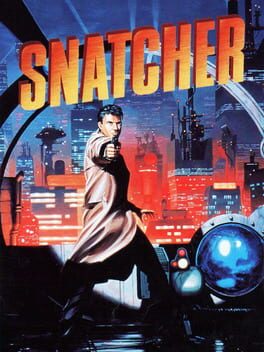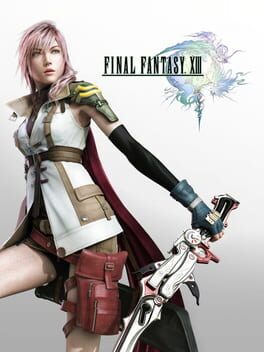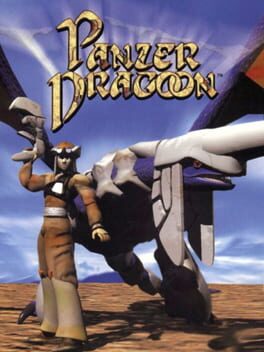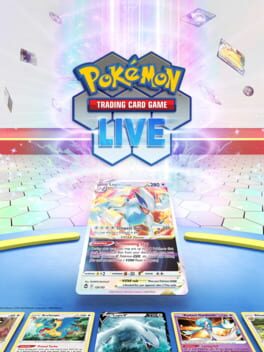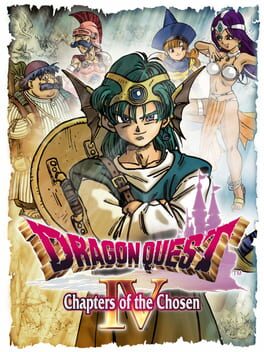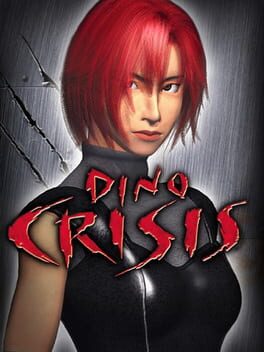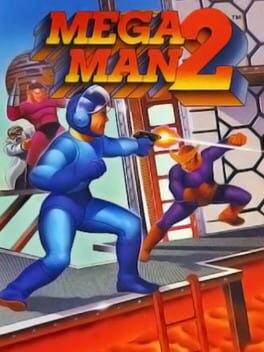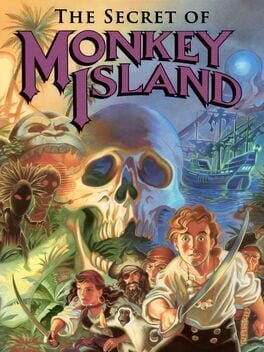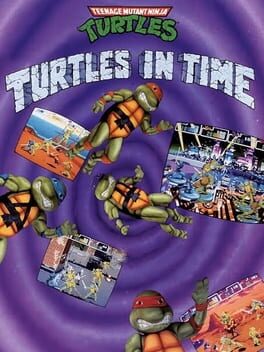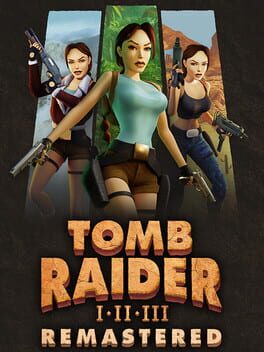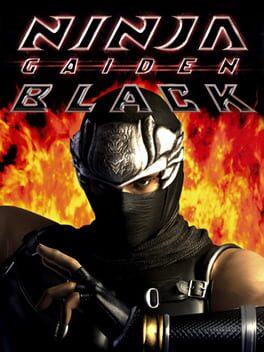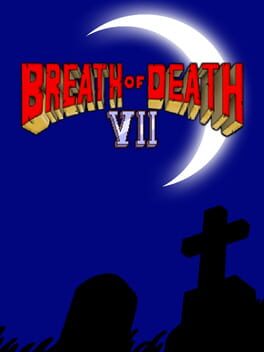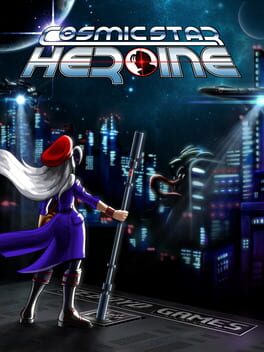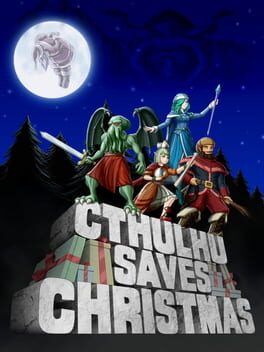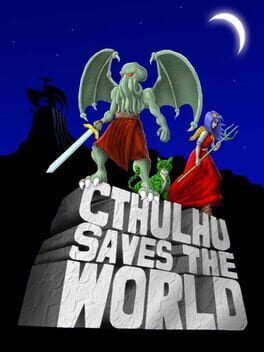The_Trash_Enby
345 reviews liked by The_Trash_Enby
Pikmin
2001
The secret behind Pikmin’s success was not that it somehow outclassed classic real-time strategy franchises, but rather that it was never competing with them to begin with. According to Shigeru Miyamoto, he came up with the idea for Pikmin one day when he observed a group of ants carrying leaves together into their nest. Miyamoto then imagined a game focused on cooperation rather than competition; he asked, “Why can’t everyone just move together in the same direction, carrying things as a team?” Nintendo EAD’s design philosophy went along with this line of reasoning, melding design mechanics from different genres to create an entirely new yet familiar experience. As a result, instead of competing against other players in Pikmin akin to classic RTS games, Pikmin forces players to explore and compete with the very environment itself by introducing puzzle-exploration and survival mechanics. It made sense in the end; after all, real-time strategy is concerned with minimizing time spent to get a competitive edge over opponents, and what better way to translate this than to force players to master their understanding over the terrain itself, managing and optimizing the one resource which governs them all?
Perhaps Nintendo’s greatest challenge was figuring out how to translate a genre considered by many to be niche and technical to an intuitive yet layered game, and even more so, translating classic actions from a mouse and keyboard allowing for such complexity to a suite of simplified controls using a gamepad. Coming from the other side as someone who played Starcraft as a kid and didn’t get into Pikmin until recently however, I’m surprised at how well EAD’s tackled this endeavor. Classic RTS games focus upon base-building and resource gathering through the micromanagement of units. Pikmin’s take upon this is to introduce a dichotomy between the player character Captain Olimar, who is incapable of doing anything by himself but can issue commands to the units only he can create by plucking out of the soil, and the Pikmin, who are essentially brainless but represent the units that must do everything. The player as Olimar must be present to figure out exactly how to best traverse and exploit the environment around him (replacing the base-building with management/prioritization puzzles) while the Pikmin provide bodies to construct, move, and attack the world around them. However, the Pikmin’s AI is fairly limited and as a result, Pikmin will sit around helplessly once they finish their actions and often get distracted by nearby objects while moving around, which is where the micromanagement kicks in. Therefore, the player has to decide how to best build up their supply of Pikmin to allocate tasks to surmount bottlenecks while exploring and opening the world, all while working against the limited thirty-day timer throughout the game’s five areas.
A part of me expected to really struggle with the gamepad while playing Pikmin, but the available actions on offer allow for a surprising degree of control despite the simplification. For instance, consider Olimar’s whistle; as a substitution for dragging and clicking to select units on PC, the whistle on the GameCube lets Olimar quickly rally groups of clustered units. Holding down B for longer allows the player to increase the size of the whistle’s AOE, which allows the player to better control and target how many Pikmin to rally in any cluster (hence, the analog of clicking and dragging to select boxes of units on mouse and keyboard). The Swarm command is another interesting translation. The obvious use is to allow Olimar to quickly move nearby Pikmin by directing them with the C-stick versus needing to aim and throw them by positioning and rotating Olimar himself. However, because it can be used to shift the position of Pikmin with respect to Olimar, it can also be used to swap the Pikmin on-deck for throwing (since Olimar will always throw the Pikmin closest to him) without needing to dismiss and re-rally separated Pikmin colors, and most importantly, it allows you to directly control the group of Pikmin following Olimar while moving Olimar himself. This second application allows the player to kite the Pikmin around telegraphed enemy attacks, and properly funnel them so the Pikmin aren’t getting as easily stuck behind walls or falling off ledges/bridges into hazards. That said, noticeable control limitations do exist. Olimar cannot pivot to move the reticle without changing his position with respect to the Pikmin around him, which can make aiming in place annoying if the Pikmin types you need to throw aren’t close enough to be moved next to Olimar with Swarm. Additionally, there is no way for Olimar to simultaneously and directly control multiple separated groups of Pikmin, which does make allocating tasks a bit slower. However, given that the tasks themselves usually don’t necessitate more than one Pikmin type at a time, this limitation is understandable, especially since the sequels would tackle this challenge with more expansive controls and multiple playable characters on the field.
Pikmin’s base model as a result is a fantastic translation of an abstract design philosophy, but I can’t help but wonder if the original could have been pushed further. Don’t misunderstand me: I absolutely take pride in mastering a game by learning all about its inner workings and pushing its mechanics to the limits simply by following a few intuitive genre principles. As such, I wish that the game was a bit harder in order to really force me to squeeze every bit of time from the game’s solid premise. For example, combat is often optional in Pikmin given how many full-grown Bulborbs are found sleeping, but given that most enemies don’t respawn within the next day after killing them and I can bring their carcasses back to base to more than replenish my Pikmin supply, combat is almost always in my favor, especially since certain enemies will spawn more mobs if they aren’t defeated. If circumstances existed where it would be unfavorable to engage (such as losing a significant number of Pikmin every time, or having so little time left that engaging would waste time), then I feel that this would add an additional layer of decision-making of deciding when to sneak past sleeping Bulborbs rather than just wiping out as many foes as I could as soon as possible. In a similar sense, I felt that certain design elements such as the Candypop Buds for switching Pikmin colors were a bit underutilized; outside of one environmental puzzle, I never had to use the Candypop Buds, mainly because I had so many remaining Pikmin and time to never justify their usage. I’ll concede here that Pikmin’s one-day Challenge Mode does at least provide a score attack sandbox where I’m forced to take my Pikmin stock and remaining time into higher consideration, but it’s missing the connectivity of the main story mode where my earlier actions would greatly affect how I planned later days in a run, particularly in making judgement calls on which days to spend at each site and which days I dedicate towards building up my Pikmin numbers versus hauling in ship parts. Regardless, I found myself completing the main game with all parts in just twenty days on my first run with minimal resets, and I’d love to try a harder difficulty mode with a stricter time limit and tougher Pikmin margins to really force me to better conserve my working force and dedicate more time to restocking my supply.
Gripes aside, I’m glad that my friends finally convinced me to try out Pikmin, not just to better appreciate RTS games as a whole but to also gain an appreciation of how different genre mechanics can work in tandem to intuitively convey concepts without spelling everything out to the player. It’s classic Nintendo at their core, and while I had my reservations coming in as a fan of older RTS franchises, they’ve managed to convince me once again that the best hook is not simply offering something that’s visibly better, but rather offering something that’s visibly different. I still think that there’s improvement to be had, but given how much I’ve enjoyed the first game, I can’t wait to see what they have to offer from iterating upon their memorable beginnings.
Perhaps Nintendo’s greatest challenge was figuring out how to translate a genre considered by many to be niche and technical to an intuitive yet layered game, and even more so, translating classic actions from a mouse and keyboard allowing for such complexity to a suite of simplified controls using a gamepad. Coming from the other side as someone who played Starcraft as a kid and didn’t get into Pikmin until recently however, I’m surprised at how well EAD’s tackled this endeavor. Classic RTS games focus upon base-building and resource gathering through the micromanagement of units. Pikmin’s take upon this is to introduce a dichotomy between the player character Captain Olimar, who is incapable of doing anything by himself but can issue commands to the units only he can create by plucking out of the soil, and the Pikmin, who are essentially brainless but represent the units that must do everything. The player as Olimar must be present to figure out exactly how to best traverse and exploit the environment around him (replacing the base-building with management/prioritization puzzles) while the Pikmin provide bodies to construct, move, and attack the world around them. However, the Pikmin’s AI is fairly limited and as a result, Pikmin will sit around helplessly once they finish their actions and often get distracted by nearby objects while moving around, which is where the micromanagement kicks in. Therefore, the player has to decide how to best build up their supply of Pikmin to allocate tasks to surmount bottlenecks while exploring and opening the world, all while working against the limited thirty-day timer throughout the game’s five areas.
A part of me expected to really struggle with the gamepad while playing Pikmin, but the available actions on offer allow for a surprising degree of control despite the simplification. For instance, consider Olimar’s whistle; as a substitution for dragging and clicking to select units on PC, the whistle on the GameCube lets Olimar quickly rally groups of clustered units. Holding down B for longer allows the player to increase the size of the whistle’s AOE, which allows the player to better control and target how many Pikmin to rally in any cluster (hence, the analog of clicking and dragging to select boxes of units on mouse and keyboard). The Swarm command is another interesting translation. The obvious use is to allow Olimar to quickly move nearby Pikmin by directing them with the C-stick versus needing to aim and throw them by positioning and rotating Olimar himself. However, because it can be used to shift the position of Pikmin with respect to Olimar, it can also be used to swap the Pikmin on-deck for throwing (since Olimar will always throw the Pikmin closest to him) without needing to dismiss and re-rally separated Pikmin colors, and most importantly, it allows you to directly control the group of Pikmin following Olimar while moving Olimar himself. This second application allows the player to kite the Pikmin around telegraphed enemy attacks, and properly funnel them so the Pikmin aren’t getting as easily stuck behind walls or falling off ledges/bridges into hazards. That said, noticeable control limitations do exist. Olimar cannot pivot to move the reticle without changing his position with respect to the Pikmin around him, which can make aiming in place annoying if the Pikmin types you need to throw aren’t close enough to be moved next to Olimar with Swarm. Additionally, there is no way for Olimar to simultaneously and directly control multiple separated groups of Pikmin, which does make allocating tasks a bit slower. However, given that the tasks themselves usually don’t necessitate more than one Pikmin type at a time, this limitation is understandable, especially since the sequels would tackle this challenge with more expansive controls and multiple playable characters on the field.
Pikmin’s base model as a result is a fantastic translation of an abstract design philosophy, but I can’t help but wonder if the original could have been pushed further. Don’t misunderstand me: I absolutely take pride in mastering a game by learning all about its inner workings and pushing its mechanics to the limits simply by following a few intuitive genre principles. As such, I wish that the game was a bit harder in order to really force me to squeeze every bit of time from the game’s solid premise. For example, combat is often optional in Pikmin given how many full-grown Bulborbs are found sleeping, but given that most enemies don’t respawn within the next day after killing them and I can bring their carcasses back to base to more than replenish my Pikmin supply, combat is almost always in my favor, especially since certain enemies will spawn more mobs if they aren’t defeated. If circumstances existed where it would be unfavorable to engage (such as losing a significant number of Pikmin every time, or having so little time left that engaging would waste time), then I feel that this would add an additional layer of decision-making of deciding when to sneak past sleeping Bulborbs rather than just wiping out as many foes as I could as soon as possible. In a similar sense, I felt that certain design elements such as the Candypop Buds for switching Pikmin colors were a bit underutilized; outside of one environmental puzzle, I never had to use the Candypop Buds, mainly because I had so many remaining Pikmin and time to never justify their usage. I’ll concede here that Pikmin’s one-day Challenge Mode does at least provide a score attack sandbox where I’m forced to take my Pikmin stock and remaining time into higher consideration, but it’s missing the connectivity of the main story mode where my earlier actions would greatly affect how I planned later days in a run, particularly in making judgement calls on which days to spend at each site and which days I dedicate towards building up my Pikmin numbers versus hauling in ship parts. Regardless, I found myself completing the main game with all parts in just twenty days on my first run with minimal resets, and I’d love to try a harder difficulty mode with a stricter time limit and tougher Pikmin margins to really force me to better conserve my working force and dedicate more time to restocking my supply.
Gripes aside, I’m glad that my friends finally convinced me to try out Pikmin, not just to better appreciate RTS games as a whole but to also gain an appreciation of how different genre mechanics can work in tandem to intuitively convey concepts without spelling everything out to the player. It’s classic Nintendo at their core, and while I had my reservations coming in as a fan of older RTS franchises, they’ve managed to convince me once again that the best hook is not simply offering something that’s visibly better, but rather offering something that’s visibly different. I still think that there’s improvement to be had, but given how much I’ve enjoyed the first game, I can’t wait to see what they have to offer from iterating upon their memorable beginnings.
Snatcher
1992
It's surprising to me that this really quite excellent cyberpunk-noir title sold so poorly outside of Japan, but I think there were two factors behind this: its potent cocktail of gore, violence, and mature themes significantly reduced the demographic of gamers who would buy it, and it seemingly is one of the first (if not the first) visual novels to be released outside of Japan, into a playerbase that is more accustomed to point-and-click adventure games.
In a way, my initial experience with this game probably mirrored that of the West in general - this might be my first visual novel, and I was baffled at first by the linearity, the lack of difficulty, and the lack of... gameplay, really. But I warmed up to it quickly enough - the genre's laserlike focus on telling a story made the experience like reading a book but with extra interactivity, and the ability to take things at my own pace. Gillian Seed, who was investigating the menace of the Snatchers (humanoid robots who kill people and take their place), could either be played as a no-nonsense straight-laced agent, or a talented goof-off who flirts with anything that moves and drinks booze on the government's dime, or anything in-between. With each new area and next stage of the investigation, I could either rush through with urgency or spend time interacting with everything and soaking up the impressive tapestry of lore, and I enjoyed the freedom that this genre afforded me. And, of course, Hideo Kojima being Hideo Kojima, the game made very clever use of the medium to pull of some clever tricks that books can't; in a very early example of this, your companion hears a faint noise and rather than outright telling you what it is, prompts you to turn the volume up so you can hear it yourself.
Of course, an interactive book is only any good if the story itself is good, and Snatcher definitely delivers on that! A lot of the plot elements seem derivative, especially today, but that doesn't take away from how well-crafted the world is, how cool some of the plot twists are, and how this story about synthetic life forms replacing people contains a heart and humanity that I associate with Kojima's best works. The pacing and storytelling is generally good too, though it suffers slightly from a need to over-recap key plot points, and several jumpscares or genuinely tense moments lose some of that thrill due to being overly-telegraphed.
This is an easy recommend to anyone - a patchwork of cinematic influences and inspirations that contains the seeds of Kojima's later work, easy enough to play to completion, both streamlined and compelling enough to never wear out its welcome.
In a way, my initial experience with this game probably mirrored that of the West in general - this might be my first visual novel, and I was baffled at first by the linearity, the lack of difficulty, and the lack of... gameplay, really. But I warmed up to it quickly enough - the genre's laserlike focus on telling a story made the experience like reading a book but with extra interactivity, and the ability to take things at my own pace. Gillian Seed, who was investigating the menace of the Snatchers (humanoid robots who kill people and take their place), could either be played as a no-nonsense straight-laced agent, or a talented goof-off who flirts with anything that moves and drinks booze on the government's dime, or anything in-between. With each new area and next stage of the investigation, I could either rush through with urgency or spend time interacting with everything and soaking up the impressive tapestry of lore, and I enjoyed the freedom that this genre afforded me. And, of course, Hideo Kojima being Hideo Kojima, the game made very clever use of the medium to pull of some clever tricks that books can't; in a very early example of this, your companion hears a faint noise and rather than outright telling you what it is, prompts you to turn the volume up so you can hear it yourself.
Of course, an interactive book is only any good if the story itself is good, and Snatcher definitely delivers on that! A lot of the plot elements seem derivative, especially today, but that doesn't take away from how well-crafted the world is, how cool some of the plot twists are, and how this story about synthetic life forms replacing people contains a heart and humanity that I associate with Kojima's best works. The pacing and storytelling is generally good too, though it suffers slightly from a need to over-recap key plot points, and several jumpscares or genuinely tense moments lose some of that thrill due to being overly-telegraphed.
This is an easy recommend to anyone - a patchwork of cinematic influences and inspirations that contains the seeds of Kojima's later work, easy enough to play to completion, both streamlined and compelling enough to never wear out its welcome.
Final Fantasy XIII
2009
I would bet it all to smoke weed with Fang and Vanille in their dimly-lit bedroom full of empty takeout bags: I have never seen a burnout codependent lesbian couple depicted this plausibly. XIII is probably the first Final Fantasy to make intra-party dynamics a narrative priority, and the most successful in this. Good dub casting supports this, and it's the series title from which I came away most fond of the characters. Pretty much the gold standard of seventh generation console visuals, and the best version of the ATB system.
Resident Evil 4
2005
"They always feel new - constant, but constantly surprising. They become part of your private autobiography and every time you [play] them a new layer of memory is added to the bond between you. Each performance is a collection of the experiences you have had together. Not many friendships last so long - I suppose the unchanging nature of the music simplifies the dynamic between you - but what would be an unhealthily one-sided affair in your personal life provides a great deal of comfort throughout your professional one. It is even richer if you can always remember the initial naivety, wonder, and thrill that accompanied your first 'date'."
This is a quote from an orchestral conductor about his evolving relationship with great pieces of classical music, but I suspect it's pretty easy for many of us to substitute a couple of words and apply it directly to our experiences with our favorite games. And in the case of RE4 it was a first date to remember.
It was the late spring of 2005, my friend had just bought the game, eight of us crammed into his dorm room at midnight, turned the lights out and the volume up as we played through the first 3 chapters more or less blind. The idea was that we'd pass the controller around whenever the player died, but the first guy somehow stayed alive all the way until chapter 3-2! Us seven spectators had one of the most intense watch-sessions ever, alternating between "AHHHH!" and "EWWWW" and "LOLOL Chuck Norris roundhouse kicks".
Two years later, I bought the Wii version - now I could shoot a Ganado in the leg and then in the face a split second later! It was so damn addictive that I completed the game (for the first time) in one single 16-hour sitting. A friend picked me up to go to a party right after, and I spent the entire time in a hazy half-asleep stupor hovering between RE4 and reality. And while I don't remember this, he said (while laughing his ass off) that at one point I stood in front of a vase and swiped my right arm back and forth in the "break vase" Wiimote gesture for a few seconds.
I've returned to Resident Evil 4 at so many different seasons of my life - playing quick rounds of Mercenaries mode with a warm bottle of milk in my lap waiting for my infant daughter to start fussing, doing a handgun-only pro run when COVID lockdowns first started - that it has to be a five-star game for me. It's not just that I have plenty of memories of it; it's that the game was addictive and fantastic enough that I kept coming back to it to make those memories in the first place, and that's something that no amount of plot contrivances or anticlimactic final acts can take away from it.
Plenty of reviews have waxed lyrical on this game's virtues better than I can, but I wanted to point out how impressed I am with how the iconic village brawl really teaches the new player how to play the game. It establishes from the outset that unlike the zombies from previous games, these guys are capable of running, moving intelligently to flank you, and following you up stairs and through windows. And through a mix of its large enemy swarms, the presence of sloping terrain which means that you will eventually hit an enemy in the face even if you just spray and pray, and the fact that enemies sometimes stagger forwards when hit in the face, and you've created the conditions for even a complete newbie to discover the melee options by accident. And the melee options are part of the extraordinarily robust but viscerally simple gameplay loop that has sustained my interest in this game through countless playthroughs.
I know that this represents the start of the shift away from survival horror that culminated in the all-action RE6 (that's a review I'm kinda dreading to get to) - but taken as it is it's a blockbuster in all the right ways. It looks and sounds fantastic even today, is exceptionally refined in execution, is a bundle of scares on the first run and then unadulterated fun on subsequent playthroughs, and... it's just good, man. Play it!
This is a quote from an orchestral conductor about his evolving relationship with great pieces of classical music, but I suspect it's pretty easy for many of us to substitute a couple of words and apply it directly to our experiences with our favorite games. And in the case of RE4 it was a first date to remember.
It was the late spring of 2005, my friend had just bought the game, eight of us crammed into his dorm room at midnight, turned the lights out and the volume up as we played through the first 3 chapters more or less blind. The idea was that we'd pass the controller around whenever the player died, but the first guy somehow stayed alive all the way until chapter 3-2! Us seven spectators had one of the most intense watch-sessions ever, alternating between "AHHHH!" and "EWWWW" and "LOLOL Chuck Norris roundhouse kicks".
Two years later, I bought the Wii version - now I could shoot a Ganado in the leg and then in the face a split second later! It was so damn addictive that I completed the game (for the first time) in one single 16-hour sitting. A friend picked me up to go to a party right after, and I spent the entire time in a hazy half-asleep stupor hovering between RE4 and reality. And while I don't remember this, he said (while laughing his ass off) that at one point I stood in front of a vase and swiped my right arm back and forth in the "break vase" Wiimote gesture for a few seconds.
I've returned to Resident Evil 4 at so many different seasons of my life - playing quick rounds of Mercenaries mode with a warm bottle of milk in my lap waiting for my infant daughter to start fussing, doing a handgun-only pro run when COVID lockdowns first started - that it has to be a five-star game for me. It's not just that I have plenty of memories of it; it's that the game was addictive and fantastic enough that I kept coming back to it to make those memories in the first place, and that's something that no amount of plot contrivances or anticlimactic final acts can take away from it.
Plenty of reviews have waxed lyrical on this game's virtues better than I can, but I wanted to point out how impressed I am with how the iconic village brawl really teaches the new player how to play the game. It establishes from the outset that unlike the zombies from previous games, these guys are capable of running, moving intelligently to flank you, and following you up stairs and through windows. And through a mix of its large enemy swarms, the presence of sloping terrain which means that you will eventually hit an enemy in the face even if you just spray and pray, and the fact that enemies sometimes stagger forwards when hit in the face, and you've created the conditions for even a complete newbie to discover the melee options by accident. And the melee options are part of the extraordinarily robust but viscerally simple gameplay loop that has sustained my interest in this game through countless playthroughs.
I know that this represents the start of the shift away from survival horror that culminated in the all-action RE6 (that's a review I'm kinda dreading to get to) - but taken as it is it's a blockbuster in all the right ways. It looks and sounds fantastic even today, is exceptionally refined in execution, is a bundle of scares on the first run and then unadulterated fun on subsequent playthroughs, and... it's just good, man. Play it!
Panzer Dragoon
1995
The first few minutes of Panzer Dragoon when your blue dragon majestically soars above the rippling water to the tune of Flight define a classic video game introduction that I doubt I will ever forget. A part of me expected the experience to be steadily downhill from there given the common complaints that I’ve heard, but to the game’s credit, it quickly established its defining hook and never let go. Panzer Dragoon was one of the first games to take total advantage of its 3D space, and it does so through its ability to rotate the player’s aim in 360 degrees. The catch is that while you can’t aim sideways/behind the dragon when looking forward, there’s a trade-off in that you can’t steer the dragon and change its mid-air position while in first-person aiming around the sides of/behind its body. As a result, there’s a precise science to swapping between these two camera modes. The macro never gets complex (shoot everything in sight while dodging and shooting down enemy attacks), but the micro is just involved enough to where there’s little downtime as you constantly peruse your surroundings and systematically pick off your foes. This is a game that wants the player to be aware of everything around them, and Team Andromeda was more than happy to let them soak in the sights given that the minimalist UI (simply consisting of a radar for spotting enemies and a player health bar) never really gets in the way. Even today, I find Panzer Dragoon to be an absolutely gorgeous game, and I can only imagine how people in 1995 felt playing this for the first time.
I’ve been warned that Panzer Dragoon’s difficulty can be a significant roadblock, but after a few playthroughs, I think it’s definitely conquerable. Besides mastering control of the player reticle/camera, players need to recognize when to utilize the homing laser lock-on (holding down the fire button) versus mashing to quickly fire the player’s handgun. The homing laser is great for getting rid of enemy swarms and easily targeting moving foes, while the handgun is a godsend for melting beefy mobs and bosses while sniping faraway targets that can’t be locked onto. In particular, Episode 3’s jumping ship boss is a notable chump check if you refuse to lock-on, while Episode 5’s airships will overwhelm you if you don’t mash. Additionally, I’ve also heard that Panzer Dragoon can feel very unforgiving since the player is allowed only one game-over before they have to restart a run, and the game only regenerates half of the player's health upon completing a level. However, given that the player can earn an extra credit per stage if they manage to shoot down more than 85% of the enemies in a single episode, I'd say there’s enough leeway given if the player takes the time to master its controls and meticulously defeat enough enemies instead of simply playing entirely defensive.
The only real gripe that I’d have is that enemy attacks sometimes blend into the background (ex: black cannonballs on top of dark environments) and can be tough to spot, especially when obscured by smoke effects from already defeated airships. I can still dodge most of these attacks with enough experience, having learning the enemy spawn positions, though it takes time to master given that players need to adapt to the game’s weightiness and natural response time. After all, you’re controlling a rider controlling a dragon rather than controlling the dragon itself, so it takes a bit more time to shift the model away from incoming barrages. As is, I’d still prefer if all enemy attacks were distinctly colored to stand out from both my own projectiles and the surroundings. Regardless, Panzer Dragoon was a breath of fresh air and I don’t mind its relative simplicity or brevity when it manages to succinctly capture an enthralling rail-shooting experience that I’ll gladly replay just to see myself visibly improve with every new run. All I can say is that this was certainly no flight of fancy; if the base model was this good, then I can’t wait to see what Team Andromeda/Smilebit have to offer with Zwei and Orta.
I’ve been warned that Panzer Dragoon’s difficulty can be a significant roadblock, but after a few playthroughs, I think it’s definitely conquerable. Besides mastering control of the player reticle/camera, players need to recognize when to utilize the homing laser lock-on (holding down the fire button) versus mashing to quickly fire the player’s handgun. The homing laser is great for getting rid of enemy swarms and easily targeting moving foes, while the handgun is a godsend for melting beefy mobs and bosses while sniping faraway targets that can’t be locked onto. In particular, Episode 3’s jumping ship boss is a notable chump check if you refuse to lock-on, while Episode 5’s airships will overwhelm you if you don’t mash. Additionally, I’ve also heard that Panzer Dragoon can feel very unforgiving since the player is allowed only one game-over before they have to restart a run, and the game only regenerates half of the player's health upon completing a level. However, given that the player can earn an extra credit per stage if they manage to shoot down more than 85% of the enemies in a single episode, I'd say there’s enough leeway given if the player takes the time to master its controls and meticulously defeat enough enemies instead of simply playing entirely defensive.
The only real gripe that I’d have is that enemy attacks sometimes blend into the background (ex: black cannonballs on top of dark environments) and can be tough to spot, especially when obscured by smoke effects from already defeated airships. I can still dodge most of these attacks with enough experience, having learning the enemy spawn positions, though it takes time to master given that players need to adapt to the game’s weightiness and natural response time. After all, you’re controlling a rider controlling a dragon rather than controlling the dragon itself, so it takes a bit more time to shift the model away from incoming barrages. As is, I’d still prefer if all enemy attacks were distinctly colored to stand out from both my own projectiles and the surroundings. Regardless, Panzer Dragoon was a breath of fresh air and I don’t mind its relative simplicity or brevity when it manages to succinctly capture an enthralling rail-shooting experience that I’ll gladly replay just to see myself visibly improve with every new run. All I can say is that this was certainly no flight of fancy; if the base model was this good, then I can’t wait to see what Team Andromeda/Smilebit have to offer with Zwei and Orta.
Dredge
2023
Not a bad game by any means. Has a great concept and enjoyable gameplay loop but overstays its welcome and eventually becomes very monotonous with almost nothing to motivate players to push past that. The slow pace reminded me a bit of sunless sea / sunless sky - both of which can be very monotonous due to slow player movement and no fast travel. In these games, however, the sense of monotony arguably adds to the overall affect and is worth pushing past regardless due to stellar writing and storytelling that lasts from start to finish. Still appreciate a lot about this game but would recommend waiting to try it out until it gets a hefty discount.
i am ADDICTED to this game. Not this game, specifically, but the actual trading card game. My experience with Yu-Gi-Oh, which was incredibly negative and had me staring in the mirror like the Damaged cover art, didn't completely turn me off of card games entirely. So I figured, "I'll give Pokemon and Magic a shot." Magic I am still entirely confused by, but not turned off of, but Pokemon I am in LOVE with. This card game is so much fucking fun to play with my friends.
More specifically, my partner! We have been bonding over this game and playing it every night, going to the game shops in Omaha to buy cards and test out new decks. It has been awesome! This is the crazy thing though: I have no real interest in Pokemon otherwise. As a kid I only liked the show and Pokemon Stadium, and a few years ago I REALLY loved Pokemon Unite as a much leaner and more fun League of Losers, but other than that? I couldn't have cared less about these Pocket Monsters.
What changed? The format did! I like the structure of the card game, as it is truly turn-based and there are no instants and spell cards (Instants I don't really have a problem with since you HAVE To spend a resource to use them, whereas in Yugioh you can just get fucked for free.) each turn feels more focused on getting your best cards into your hand as fast as you can, so you can build up a supply of firepower to blast your opponent to kingdom come while hoping they don't find a way to throw a wrench in your plan. Honestly, having your plan derailed might be even more fun, because it then becomes a game of improvised strategy. "OH fuck, they took away my Switch card so I'm going to have to retreat, but I can use Dialga's ability to get that energy back, so I just need to get Corviknight on the field and I can turn the tide again."
Also this version of the game is pretty cool. The battle pass sucks ass, and it gives you coins that for the life of me I think are genuinely useless as I can't find a way to purchase card sleeves or custom coins or whatever the fuck. I bought sleeves for my real deck for 4 bucks! It was super easy!
I would recommend this game to learn to play, but after that? Go get a deck and play some friends, as it is so much more exciting that way.
More specifically, my partner! We have been bonding over this game and playing it every night, going to the game shops in Omaha to buy cards and test out new decks. It has been awesome! This is the crazy thing though: I have no real interest in Pokemon otherwise. As a kid I only liked the show and Pokemon Stadium, and a few years ago I REALLY loved Pokemon Unite as a much leaner and more fun League of Losers, but other than that? I couldn't have cared less about these Pocket Monsters.
What changed? The format did! I like the structure of the card game, as it is truly turn-based and there are no instants and spell cards (Instants I don't really have a problem with since you HAVE To spend a resource to use them, whereas in Yugioh you can just get fucked for free.) each turn feels more focused on getting your best cards into your hand as fast as you can, so you can build up a supply of firepower to blast your opponent to kingdom come while hoping they don't find a way to throw a wrench in your plan. Honestly, having your plan derailed might be even more fun, because it then becomes a game of improvised strategy. "OH fuck, they took away my Switch card so I'm going to have to retreat, but I can use Dialga's ability to get that energy back, so I just need to get Corviknight on the field and I can turn the tide again."
Also this version of the game is pretty cool. The battle pass sucks ass, and it gives you coins that for the life of me I think are genuinely useless as I can't find a way to purchase card sleeves or custom coins or whatever the fuck. I bought sleeves for my real deck for 4 bucks! It was super easy!
I would recommend this game to learn to play, but after that? Go get a deck and play some friends, as it is so much more exciting that way.
Random thought: I played Hollow Knight a month ago, and Cornifer and Iselda are basically Torneko and Tessie as bugs. No, I will not elaborate.
Anyways, I've previously played all of what I consider 'classic DQ' (the original versions of the first seven games), and this marks my first foray into the DS remakes. I like the game a lot, but it also solidifies my distaste for the series' combat in general. It's not so much that the game is grindy, but that it boils down to praying hard to RNGesus only to find out that he's RNSatan instead. As an example, an early-game boss can either do a normal attack for 30-40 damage, an AOE attack for around 20, or a different AOE attack for 40plus. He also sometimes gets two actions per round. And if you think about it, him doing an AOE twice at the end of a round, then following it up with the same thing at the start of the next round (which happened to me more than once) is such monumental overkill that it will wipe your party even if you're overlevelled. Random lategame mooks do this as well. Some bosses will instakill a character if they get a critical hit - which would be tolerable in a game where you have ready access to reliable methods of resurrection, but not here! This all adds up to a game which is so random that it kills almost all attempts at strategizing in favor of relying on luck, and simply doesn't come across as fun for me (or maybe it's a skill issue? So many people enjoy the combat so I might be missing something).
The game does have updated graphics and better QoL than the NES original - as expected - but I do need to complain about how they added one of my biggest pet peeves: Xenogears-style camera angles. I feel like controllable camera angles are good for immersion if you have interesting locales that are set up like actual real-world locations, but if your towns and dungeons are set up in a rigid grid and the only thing that separates them from 'traditional' JRPG towns are the fact that the doors of houses are not all facing the same direction, then all you're doing by adding a controllable camera is adding tedium to getting around!
My star rating above should spoil that there are enough things I like about the game to balance out my biggest gripes, and really it's just the fact that... well, this game is Dragon Quest, man. Like every other game in the series I've played, the NPCs are charming, the vibes are cozy, and it really nails the sense of exploration by being nonlinear enough that everyone's journey of discovering the world in Chapter 5 will be uniquely their own. The more modern hardware and more polished translation render the dramatic moments of the original - like your childhood friend's willingness to protect you, and the villain's origin story - far more effective. And as one of the not-many who adores Koichi Sugiyama (the composer, not the person), the updated orchestration does his work a lot more justice; as a purist who writes very much in a traditional classical style, the more 'accurate' instrumental samples represent a huge jump in quality over the tinny midi of the original.
One last thing I need to mention is that the Party Chat function - which adds a ton of characterization to your party (and even the guest members!) - is inexplicably dummied out of the Western release. For a game with such a colorful cast of characters this is a massive miss!
In the end, this is a great way to play one of the strongest entries of the series in a more 'modern' medium. Fittingly for a series which has been often described as 'RPG comfort food', you know exactly what you'll get - if you like the other games in the series, I'd recommend this!
Anyways, I've previously played all of what I consider 'classic DQ' (the original versions of the first seven games), and this marks my first foray into the DS remakes. I like the game a lot, but it also solidifies my distaste for the series' combat in general. It's not so much that the game is grindy, but that it boils down to praying hard to RNGesus only to find out that he's RNSatan instead. As an example, an early-game boss can either do a normal attack for 30-40 damage, an AOE attack for around 20, or a different AOE attack for 40plus. He also sometimes gets two actions per round. And if you think about it, him doing an AOE twice at the end of a round, then following it up with the same thing at the start of the next round (which happened to me more than once) is such monumental overkill that it will wipe your party even if you're overlevelled. Random lategame mooks do this as well. Some bosses will instakill a character if they get a critical hit - which would be tolerable in a game where you have ready access to reliable methods of resurrection, but not here! This all adds up to a game which is so random that it kills almost all attempts at strategizing in favor of relying on luck, and simply doesn't come across as fun for me (or maybe it's a skill issue? So many people enjoy the combat so I might be missing something).
The game does have updated graphics and better QoL than the NES original - as expected - but I do need to complain about how they added one of my biggest pet peeves: Xenogears-style camera angles. I feel like controllable camera angles are good for immersion if you have interesting locales that are set up like actual real-world locations, but if your towns and dungeons are set up in a rigid grid and the only thing that separates them from 'traditional' JRPG towns are the fact that the doors of houses are not all facing the same direction, then all you're doing by adding a controllable camera is adding tedium to getting around!
My star rating above should spoil that there are enough things I like about the game to balance out my biggest gripes, and really it's just the fact that... well, this game is Dragon Quest, man. Like every other game in the series I've played, the NPCs are charming, the vibes are cozy, and it really nails the sense of exploration by being nonlinear enough that everyone's journey of discovering the world in Chapter 5 will be uniquely their own. The more modern hardware and more polished translation render the dramatic moments of the original - like your childhood friend's willingness to protect you, and the villain's origin story - far more effective. And as one of the not-many who adores Koichi Sugiyama (the composer, not the person), the updated orchestration does his work a lot more justice; as a purist who writes very much in a traditional classical style, the more 'accurate' instrumental samples represent a huge jump in quality over the tinny midi of the original.
One last thing I need to mention is that the Party Chat function - which adds a ton of characterization to your party (and even the guest members!) - is inexplicably dummied out of the Western release. For a game with such a colorful cast of characters this is a massive miss!
In the end, this is a great way to play one of the strongest entries of the series in a more 'modern' medium. Fittingly for a series which has been often described as 'RPG comfort food', you know exactly what you'll get - if you like the other games in the series, I'd recommend this!
Dino Crisis
1999
One of the coolest characters ever, with one of the best designs ever, in one of the most mid games ever published. It's truly a conundrum that they came up with Regina, who is awesome, who you WANT to play as, and as soon as the character designer submitted her, Mikami said "Alright, that's enough ideas for today!"
So, my beef now is with modders. There is a Regina mod for RE2 and 3, which is cool, love that. But why isn't there one for Fallout: New Vegas? We have dropped the ball significantly not having a Regina mod for any game that has mods. Let me play as this character in games other than Dino Crisis or I am going to be on the fucking news.
So, my beef now is with modders. There is a Regina mod for RE2 and 3, which is cool, love that. But why isn't there one for Fallout: New Vegas? We have dropped the ball significantly not having a Regina mod for any game that has mods. Let me play as this character in games other than Dino Crisis or I am going to be on the fucking news.
Resident Evil
2002
Never before has a game been so thoroughly blown out of the fucking room by its remake than Resident Evil 96. It's kind of a unique case-study on it too.
Resident Evil 2 Remake feels more like a companion piece to RE2, so i'd still recommend someone play both. Metroid 1 wasn't exactly "fun" and felt so prototypical that Zero Mission might as well be an entirely new game. This is the only remake where I'd say, "you don't need to play Resident Evil 96, you just need to play REmake." The clincher? Resident Evil 96 is still REALLY fucking good! That game is easily a 4 1/2 star game!! They took the foundation of a totally kickass game and made it fucking perfect!
Resident Evil 2 Remake feels more like a companion piece to RE2, so i'd still recommend someone play both. Metroid 1 wasn't exactly "fun" and felt so prototypical that Zero Mission might as well be an entirely new game. This is the only remake where I'd say, "you don't need to play Resident Evil 96, you just need to play REmake." The clincher? Resident Evil 96 is still REALLY fucking good! That game is easily a 4 1/2 star game!! They took the foundation of a totally kickass game and made it fucking perfect!

